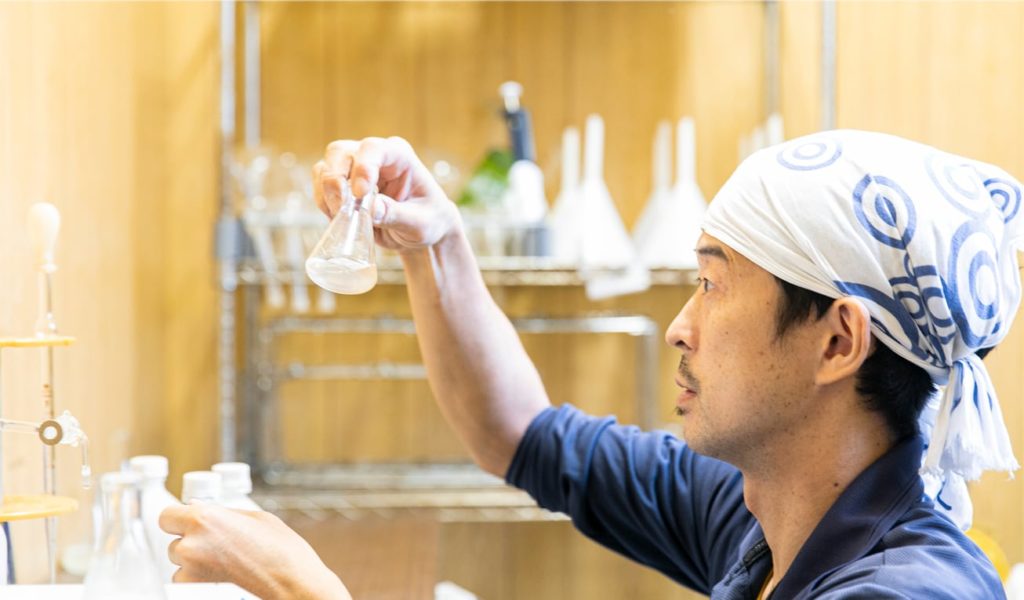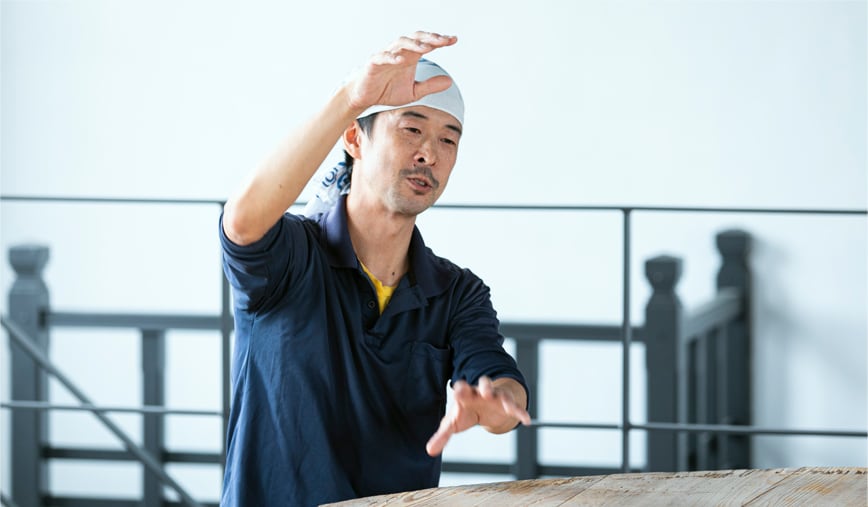Sake Brewing Our Way
Taka Brewing Staff

Asegawa Ryō
Joined in 2015
Before joining Nagayama Honke Shuzōjō, I worked for a dairy goods company making cheese in Hokkaido. The company regularly transferred employees nationwide, but eventually I decided I wanted to return home to Ube, so came to work here. The initial attraction was that I like being involved in the food industry, and one day I read a special sake issue of a cooking magazine and got interested in the topic. I was also intrigued by the connection shared between cheese and sake as fermented foods.
My primary work here is in production. I’m now a floor manager, but it took me almost three years to really understand the procedures behind brewing sake. I had experience with making food at my last job, but there is a fundamental difference because of the very fine balance between those parts of the brewing process which can be automated, and those that require the human sense of touch. There are lots of individual tasks that are fairly straightforward, but each one carries a deeper meaning for the process as a whole, so it’s vital to understand the big picture. That’s what makes sake brewing such an interesting job.
Flavor that deepens
with each sip.
Taka isn’t what I’d call an extremely showy sake, but when you drink it, before you know it you’ve refilled your cup and drunk another. It’s a sake you want to keep drinking, with flavor that deepens with each sip. We try to make a sake that really brings out the natural flavor of the rice.

Stirring that
preserves the grains of rice
and enlivens the microbes.
When people think of sake brewing, they often imagine men standing and stirring these massive tanks with all their might, but at Taka, once the mash building is over and fermentation starts, we really don’t stir at all. The reason is that we don’t want to break the rice grains by moving them around. Allowing the grains to dissolve through the work of kōji and yeast brings out much better flavor than breaking them up manually. And if you try to push the mash to bring out flavor, you end up making off-flavors as well, and in a worst-case scenario fermentation stalls and you don’t get the alcohol content you need. The work is extremely sensitive and needs just the right touch. This core part of the brewing process is left to the tōji, and I’m still studying every day to learn how to do it.
I still have so much to learn about making sake, but now I think I need to start studying rice-growing as well. One of our goals is to become a local center for Yamadanishiki production. Local farmers are ageing, and we’re being entrusted with more and more farmland, so I think we have a real duty to make sure these valuable fields are preserved for the future.




